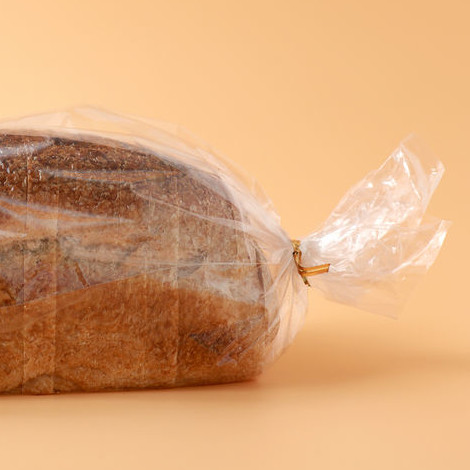
Antimicrobial Packaging
What is Antimicrobial Packaging?
Antimicrobial packaging (AP) is a relatively new packaging technology that focuses on extending the shelf life of highly perishable food products. It allows food processors to reduce dependence on mold inhibitors and chemical preservatives, as well as reduce refrigeration costs at certain stages within the supply chain.
By combining AP with things like water activity control, acidity control or thermal processing, food processors achieve the following benefits:
- Longer product shelf life
- Easier transition towards clean label and preservative-free products
- Access to new markets that otherwise would be too far to be logistically feasible
- Reduction of retail returns
- Reduction of food waste
Origin
Extensive research in the last decades has shown that packaging materials, edible films and coatings can be fortified with antimicrobials to create a protective barrier to prevent and retard microbial growth—mainly bacteria and mold.1
Under the antimicrobial packaging concept, packaging materials can be used as carriers for antimicrobial agents to be released in an effective manner into the food to prolong its shelf life, quality, and safety.1
How it works
Antimicrobial food packaging aims at reducing, inhibiting or retarding the growth of spoilage or pathogenic microorganisms that may be present in the packaged food or packaging material itself.
Forms of antimicrobial packaging include:1,2,3
- Addition of sachets or pads containing volatile antimicrobial agents into the headspace of the package.
- Incorporation or dispersion of volatile and nonvolatile antimicrobial agents directly into the packaging polymer through extrusion, heat-press, or casting. The main disadvantage of extrusion is the use of high temperatures and shear forces that can reduce antimicrobial activities. Polymers used in AP include biaxially oriented polypropylene film (BOPP), polyethylene terephthalate (PET), ethylene vinyl acetate (EVA), ethylene-vinyl alcohol (EVOH), and EVA-EVOH copolymer films.
- Coating or adsorbing antimicrobials onto polymer surfaces. Coatings and dips serve as carriers of antimicrobial compounds. They are in direct contact with the food surface and can be applied at any stage of the food supply chain.
- Immobilization of antimicrobials to polymers by ionic or covalent linkages.
- Use of polymers or packaging materials that are inherently antimicrobials (e.g. zeomic).
- Antimicrobial macromolecules with film-forming properties (e.g. polymer chitosan).
Application
Food products or materials intended to come into contact with foods must be safe. Despite antimicrobial packaging’s success, some obstacles still hinder its wider commercialization. Regulatory requirements, cost-to-benefit ratio, production capability, commercial viability, consumer acceptance, and sensory impact on food are the main factors to consider.
Agents with antimicrobial properties used for packaging materials
Antimicrobial agents used in AP are expected to extend the lag phase and reduce the growth rate of microorganisms, thus prolonging shelf life and maintaining food safety. To be effective, they need to be present at the food surface above their minimum inhibitory concentration (MIC).
Antimicrobial agents that can be used for AP include:2
- Ethanol and other alcohols
- Organic salts and their salts (e.g. benzoates, propionates and sorbates)
- Fungicides (e.g. imazalil and benomyl)
- Enzymes (e.g. oxygen scavenger glucose oxidase, lactoperoxidase, lysozyme)
- Extracts from spices and herbs [e.g. Allyl Isothiocyanate (AIT)]
- Essential oils (e.g. cinnamaldehyde, eugenol, catechin)
- Nisin and imazalil
- SO2, ClO2, silver ions (Ag+)
- Bacteriocins
Recommendations when implementing AP
- Interfacial and chemical compatibility between antimicrobial agent and packaging polymer.3
- Inclusion of antimicrobial agents into a packaging matrix might alter its mechanical and barrier properties.1,2
- Some antimicrobial agents may even function as polymer plasticizers (improving or decreasing the tensile properties and flexibility of some polymers).1
- Diffusion coefficient of antimicrobial compounds in the solid packaging material matrix.
Regulation
Antimicrobial packaging to be marketed in the United States is subject to the food additive approval process if its components are reasonably expected to migrate to foods for effective microbial inhibition. There are two (2) processes of food contact substance approval in FDA:
- Food contact notification process: Packaging material that has no intended technical effect on the food may be approved by the former process, in which a manufacturer should notify the FDA to market a new product before its introduction and can sell it unless the FDA objects to the notification.
- Food additive petition process: The material that exerts antimicrobial effect on the food through migration or controlled release needs to be processed through the food additive petition process.
References
- Corrales, M., Fernández, A., and Han, J.H. “Antimicrobial Packaging Systems.” Innovations in Food Packaging, 2nd edition, Academic Press, Elsevier Ltd., 2014, pp. 133–158.
- Robertson, G.L. “Active and Intelligent Packaging.” Food Packaging: Principles and Practice, 3rd edition, CRC Press, Taylor & Francis Group, LLC, 2013, pp. 399–425.
- Cho, S.Y., Lee, D.S., and Han, J.H. “Antimicrobial Packaging.” The Wiley Encyclopedia of Packaging Technology, 3rd edition, John Wiley & Sons, Inc., 2009, pp. 50–58.

